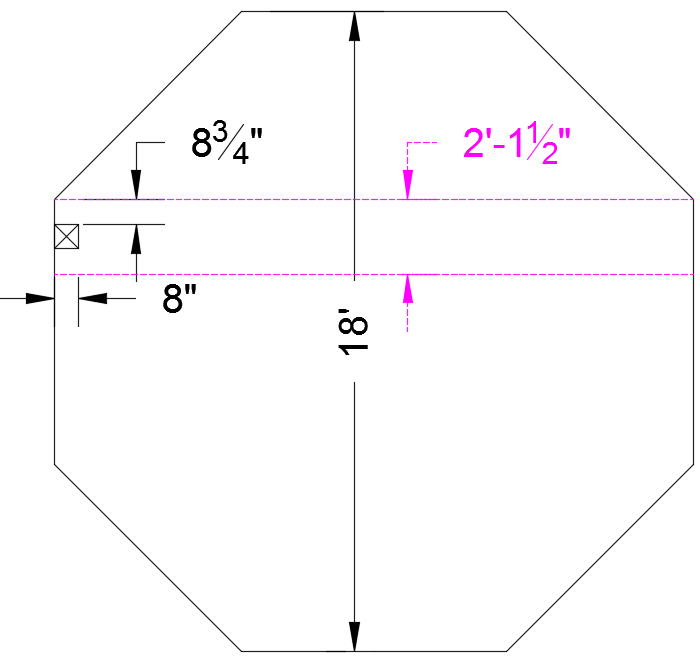P1ENG
Structural
- Aug 25, 2010
- 237
Once again, I have a concrete question. I have a 71.6 kip LRFD load coming down an 8"x8" tube column. There is an existing 18' hexagon concrete pad (3' thick) on the site. The new construction hits the existing pad on the edge as shown below. The 8" tube is flush with the edge of the concrete. How can I check the existing hexagon pad (failure methods? shear? blowout?,etc.)? I can't traverse the ACI code so well, and I don't ever find what I need with any confidence. Seems like actual analysis methods come from PCA whenever I need to concrete calculations. Please point me in the right direction. Maybe it is as simple as assuming a strip of concrete with a width of 25.5" (8.75"+8"+8.75") and just doing a SCP shear check of a beam?
First, I am assuming unreinforced concrete since we know little about the existing concrete.
If I can't get the existing pad to work, I guess I will make them cut the hexagon out such that I can get a proper square footing in there? It is a large mass of concrete, so I would like to use it if I can instead of going through the labor of cutting it out. I also thought about doweling the existing pad and pouring new against it to get the required square footing. Please hit me with some suggestions.

Juston Fluckey, SE, PE, AWS CWI
Engineering Consultant
First, I am assuming unreinforced concrete since we know little about the existing concrete.
If I can't get the existing pad to work, I guess I will make them cut the hexagon out such that I can get a proper square footing in there? It is a large mass of concrete, so I would like to use it if I can instead of going through the labor of cutting it out. I also thought about doweling the existing pad and pouring new against it to get the required square footing. Please hit me with some suggestions.

Juston Fluckey, SE, PE, AWS CWI
Engineering Consultant

